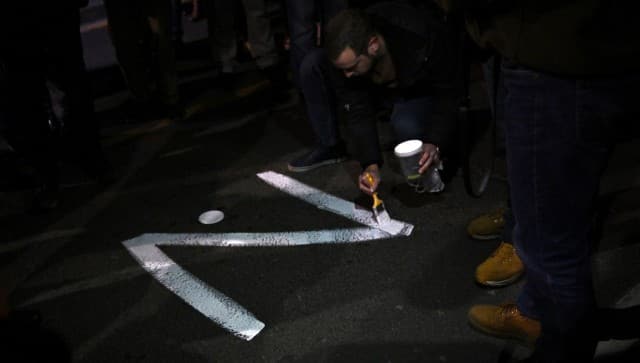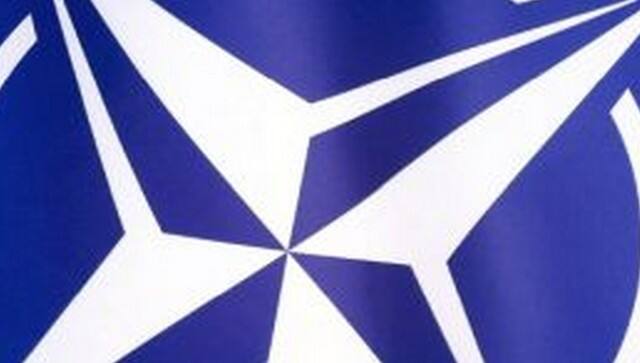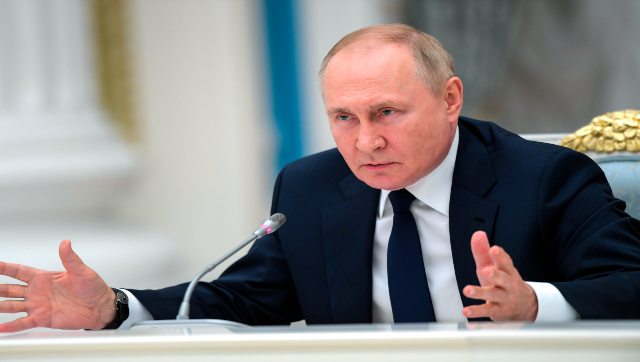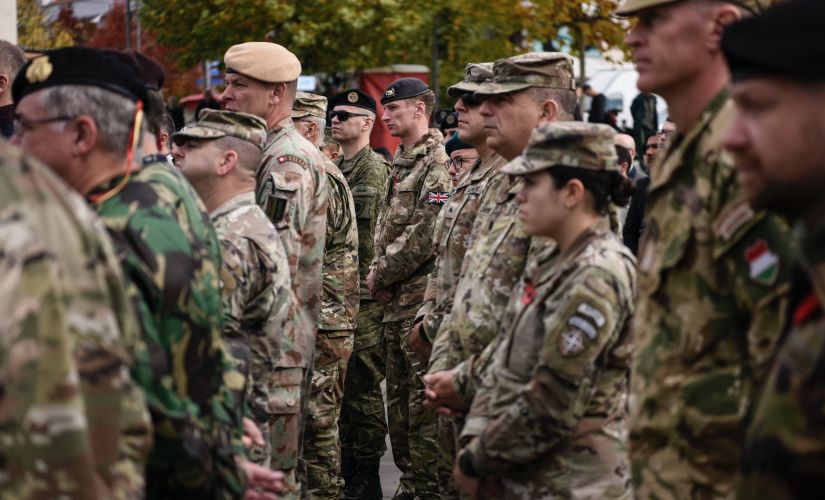Kosovo’s government late Sunday postponed for a month the implementation of new border rules that sparked tensions in the north of the country where ethnic Serbs blocked roads and unknown gunmen fired on police. Police closed two border crossings with Serbia on Sunday after the incident during which no one was injured, a police statement said. The latest tensions came after Kosovo’s capital Pristina said from Monday people entering Kosovo with Serbian IDs will have to replace them with a temporary document during their stay in the country. The government also said ethnic Serbs who have vehicle registration plates issued by Serbia would have to change them for Kosovo licence plates within two months. Prime Minister Albin Kurti said on Sunday it was a reciprocal move since Belgrade requires the same from Kosovo citizens entering Serbia. But, after meeting with US ambassador to Kosovo Jeffrey Hovenier, who told reporters he sought from Pristina that implementation of the new regime be postponed for 30 days, the government pledged to do so. But why are Kosovo and Serbia at odds? Let’s take a closer look: Kosovo is a mainly ethnic Albanian territory that was formerly a province in Serbia. Its populace, known as Kosovars or Kosovans, are largely ethnically Albanian with Serb, Bosniak and Turk minorities, as per Jerusalem Post.
The vast majority of its population is Muslim, and its official languages are Albanian and Serbian.
Kosovo declared independence in 2008 but ethnic Serbs who make up the majority in the northern region do not recognise Pristina’s authority. They remain politically loyal to Serbia which still provides financial support. [caption id=“attachment_10437971” align=“alignnone” width=“640”]
 A protester paints the “Z” sign on a street in Belgrade, in reference to Russian tanks marked with the letter. AFP[/caption] Serbia has refused to recognise Kosovo’s statehood and still considers it part of Serbia, even though it has no formal control there. Kosovo’s independence has been recognized by about 100 countries including the United States. Russia, China and five European Union nations have sided with Serbia. The deadlock has kept tensions simmering and prevented full stabilisation of the Balkan region after the bloody wars in the 1990s. Centuries-old dispute The dispute over Kosovo is centuries-old. Serbia cherishes the region as the heart of its statehood and religion. Numerous medieval Serb Orthodox Christian monasteries are in Kosovo. Serb nationalists view a 1389 battle against Ottoman Turks there as a symbol of its national struggle. Kosovo’s majority ethnic Albanians, who are majority Muslims, view Kosovo as their country and accuse Serbia of occupation and repression.
A protester paints the “Z” sign on a street in Belgrade, in reference to Russian tanks marked with the letter. AFP[/caption] Serbia has refused to recognise Kosovo’s statehood and still considers it part of Serbia, even though it has no formal control there. Kosovo’s independence has been recognized by about 100 countries including the United States. Russia, China and five European Union nations have sided with Serbia. The deadlock has kept tensions simmering and prevented full stabilisation of the Balkan region after the bloody wars in the 1990s. Centuries-old dispute The dispute over Kosovo is centuries-old. Serbia cherishes the region as the heart of its statehood and religion. Numerous medieval Serb Orthodox Christian monasteries are in Kosovo. Serb nationalists view a 1389 battle against Ottoman Turks there as a symbol of its national struggle. Kosovo’s majority ethnic Albanians, who are majority Muslims, view Kosovo as their country and accuse Serbia of occupation and repression.
Ethnic Albanian rebels launched a rebellion in 1998 to rid the country of Serbian rule.
Belgrade’s brutal response prompted a NATO intervention in 1999, which forced Serbia to pull out and cede control to international peacekeepers. As per Jerusalem Post, German chancellor Gerhard Schroder said this about NATO’s intentions: “We are not going to war, but we are called upon to implement a peaceful solution in Kosovo, including by military means!” A NATO spokesperson also described their motivation as “Serbs out, peacekeepers in, refugees back.” The bombing campaign lasted longer than expected as Serbian resistance held out longer than planned. It escalated from simply targeting Yugoslav defences to striking individual Yugoslav units on the ground, as per the report. At one point, it seemed NATO troops would mount a ground assault as well, with British and Norwegian special forces both having reportedly entered Kosovo. [caption id=“attachment_10994621” align=“alignnone” width=“640”]
 NATO flag. AFP[/caption] Meanwhile, Russian troops also entered the country, with Russia being Yugoslavia’s ally, and tensions between Russian and NATO forces were noted during this time. But in the end the NATO effort that essentially ended the war, leading to the signing of the Kumanovo Agreement that saw Yugoslav forces pull out. Tensions between the two countries remain high and Kosovo’s fragile peace is maintained by a NATO mission which has 3,770 troops on the ground. Italian peacekeepers were visible in and around Mitrovica on Sunday. The two countries committed in 2013 to a dialogue sponsored by the European Union to try to resolve outstanding issues but little progress has been made. The region saw the last major tensions in September when hundreds of ethnic Serbs staged daily protests and blocked traffic at the two border crossings, as per Al Jazeera. A year ago, after local Serbs blocked the same roads over license plates, Kosovo’s government deployed special police forces and Belgrade flew fighter jets close to the border. The government said in a statement it would postpone the implementation of the two decisions until September 1, seeking that “all barricades are removed and full freedom of movement is established” on Monday. EU foreign policy chief Josep Borrell on Twitter hailed Pristina’s decision and said he expected “all roadblocks to be removed immediately”. On Sunday evening, hundreds of ethnic Serbs parked trucks, tankers and other heavy transport vehicles on roads towards the Jarinje and Brnjak crossings with Serbia, blocking traffic, an AFP correspondent said. Large crowds of local Serbs gathered around the barricades with the intention to remain there. “The atmosphere has been brought to a boil,” Serbian President Aleksandar Vucic said earlier Sunday, warning that “Serbia will win” if Serbs are attacked. Kurti accused Vucic of igniting “unrest”. NATO-led peacekeepers from the KFOR mission in a statement labelled the security situation in Kosovo’s north as tense. How is Russia involved? Russia is a longstanding ally of Serbia. Kremlin propaganda has found a willing audience in Serbia, where simmering hatred towards NATO and the US has led many to side with Moscow. While most of Europe has sought to clamp down on Russian news outlets, they flourish in Serbia where even state-backed media often parrot the Kremlin line. “I think the truth is somewhere in between, but nobody is reporting it. So I follow both Russian and Western media and try to read between the lines,” said Dario Acimovic, a 27-year-old graphic designer. “They (the West) have cut off Russian media so they don’t get to hear the other side. All you get as a result is hysteria.” Putin’s ‘divine status’ Under the rule of President Aleksandar Vucic, Serbia’s media has increasingly been forced to toe the government line, while the few remaining independent outlets have faced sustained pressure from authorities. [caption id=“attachment_10884311” align=“alignnone” width=“640”]
NATO flag. AFP[/caption] Meanwhile, Russian troops also entered the country, with Russia being Yugoslavia’s ally, and tensions between Russian and NATO forces were noted during this time. But in the end the NATO effort that essentially ended the war, leading to the signing of the Kumanovo Agreement that saw Yugoslav forces pull out. Tensions between the two countries remain high and Kosovo’s fragile peace is maintained by a NATO mission which has 3,770 troops on the ground. Italian peacekeepers were visible in and around Mitrovica on Sunday. The two countries committed in 2013 to a dialogue sponsored by the European Union to try to resolve outstanding issues but little progress has been made. The region saw the last major tensions in September when hundreds of ethnic Serbs staged daily protests and blocked traffic at the two border crossings, as per Al Jazeera. A year ago, after local Serbs blocked the same roads over license plates, Kosovo’s government deployed special police forces and Belgrade flew fighter jets close to the border. The government said in a statement it would postpone the implementation of the two decisions until September 1, seeking that “all barricades are removed and full freedom of movement is established” on Monday. EU foreign policy chief Josep Borrell on Twitter hailed Pristina’s decision and said he expected “all roadblocks to be removed immediately”. On Sunday evening, hundreds of ethnic Serbs parked trucks, tankers and other heavy transport vehicles on roads towards the Jarinje and Brnjak crossings with Serbia, blocking traffic, an AFP correspondent said. Large crowds of local Serbs gathered around the barricades with the intention to remain there. “The atmosphere has been brought to a boil,” Serbian President Aleksandar Vucic said earlier Sunday, warning that “Serbia will win” if Serbs are attacked. Kurti accused Vucic of igniting “unrest”. NATO-led peacekeepers from the KFOR mission in a statement labelled the security situation in Kosovo’s north as tense. How is Russia involved? Russia is a longstanding ally of Serbia. Kremlin propaganda has found a willing audience in Serbia, where simmering hatred towards NATO and the US has led many to side with Moscow. While most of Europe has sought to clamp down on Russian news outlets, they flourish in Serbia where even state-backed media often parrot the Kremlin line. “I think the truth is somewhere in between, but nobody is reporting it. So I follow both Russian and Western media and try to read between the lines,” said Dario Acimovic, a 27-year-old graphic designer. “They (the West) have cut off Russian media so they don’t get to hear the other side. All you get as a result is hysteria.” Putin’s ‘divine status’ Under the rule of President Aleksandar Vucic, Serbia’s media has increasingly been forced to toe the government line, while the few remaining independent outlets have faced sustained pressure from authorities. [caption id=“attachment_10884311” align=“alignnone” width=“640”]
 File image of Russian president Vladimir Putin. AP[/caption] During the run-up to the war, Serbia’s leading tabloid, Informer, printed numerous gushing articles praising Vladimir Putin along with a cover story two days before the invasion with the headline, “Ukraine has attacked Russia.” “Serbia’s pro-government propaganda outlets created Putin’s personality cult that even surpasses the one they built for Vucic,” said Dinko Gruhonjic, associate professor of journalism at University of Novi Sad.
File image of Russian president Vladimir Putin. AP[/caption] During the run-up to the war, Serbia’s leading tabloid, Informer, printed numerous gushing articles praising Vladimir Putin along with a cover story two days before the invasion with the headline, “Ukraine has attacked Russia.” “Serbia’s pro-government propaganda outlets created Putin’s personality cult that even surpasses the one they built for Vucic,” said Dinko Gruhonjic, associate professor of journalism at University of Novi Sad.
“He enjoys a practically divine status,” he added.
According to the latest opinion poll by Belgrade-based democracy watchdog Crta, two-thirds of the population feels “closer” to Russia. Three-quarters of Serbians also believe the Kremlin was forced into war “due to NATO’s intentions to expand”. The same survey suggested that 40 percent of the population were in favour of dropping the country’s long pursuit of joining the European Union and allying with Moscow instead. “Pro-government media have a clear positive stance on Russia, are neutral towards the EU and negative towards Ukraine,” said Vujo Ilic, a researcher and one of the survey’s authors. “Russia is the alternative shown to voters to prove that Serbia can make it without the European Union,” he added. Cultural and historic ties between the two predominantly Slavic and Orthodox Christian countries stretch back centuries, leading many Serbs to be warm toward Russia. In the capital Belgrade, T-shirts featuring Putin’s face are sold from souvenir kiosks, while the letter Z – which has become the Russian symbol for the invasion – has been painted on walls across the city. ‘It’s not true what they say’ The scars from the NATO-bombing campaign against Serbia in 1999 during the war in Kosovo remain a bitter wound for many. “I don’t trust Western media,” 73-year-old pensioner Tihomir Vranjes told AFP. “I remember what they wrote about Serbs during the wars. We were portrayed as animals. As it wasn’t true then, it’s not true now what they say about the Russians.” The coverage of the war and consumption of news from Russian sources has not gone unnoticed, with the Ukrainian ambassador in Belgrade raising his voice in protest, saying that “citizens of Serbia are not properly informed”. But staying up to date with accurate news on the war is not always easy in Serbia. Even for an Ukrainian like Maric – with access to first-hand accounts from home – navigating her way through the deluge of misinformation and outright propaganda in Serbia is difficult. “Their propaganda is so efficient that after five minutes of reading, I start to question myself,” she said. With inputs from agencies Read all the Latest News , Trending News , Cricket News , Bollywood News , India News and Entertainment News here. Follow us on Facebook , Twitter and Instagram .
)